Narconon Asia History 2003
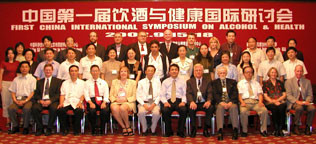
The year 2003 was one of new milestones and accomplishments in reaching out to educators, government officials and health professionals in Asia.
In Pakistan, Dr. Sharif, the Executive Director of Narconon Hyderabad in Pakistan used the Narconon technology to give drug prevention lectures in schools. Dr. Sharif was also using Narconon First Step procedures in his medical practice to help ease people off addictive drugs. In June, Dr. Sharif led a four hundred person march through the streets of Hyderabad to support the United Nation’s International Day against Drug Abuse. At the front of the march, Dr. Sharif, his staff, volunteers and supporters carried Narconon banners and wore Narconon t-shirts. Later in the summer, Dr. Sharif went to Sweden to receive training so he could apply more of the Narconon techniques to help addicts in their recovery.
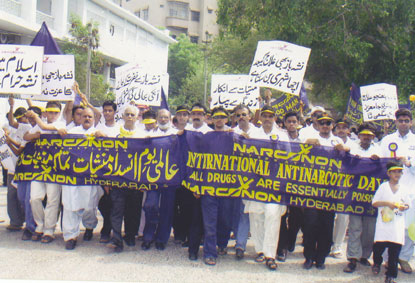
In late July, a team of competent Narconon executives and a volunteer flew to Manila in the Philippines to deliver an entire week of workshops on the Narconon drug recovery and education technologies. In addition to Narconon International President Clark Carr, there was Bobby Wiggins, a long-time Narconon specialist in drug education and Dr. Nerida James, the President of Narconon Australia. The goal was to train a large group of drug educators who would carry the message out into Manila’s classrooms, and to train drug rehab professionals in the Narconon First Step technology.
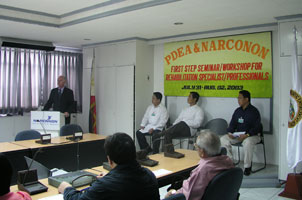
Mr. Wiggins conducted drug education for those selected to educate Manila’s schoolchildren. After three days of training, twenty-two these educators hit the streets, visiting schools and giving their drug education presentations in nineteen classrooms, all at the same time. More than 1000 students heard the anti-drug message that day. At the end of the presentations, many of the students in attendance said they would no longer use drugs.
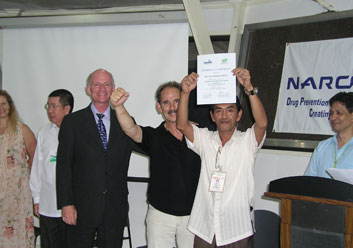
While Mr. Wiggins was training the new drug educators, Mr. Carr and Dr. James taught drug rehab professionals how to use the Narconon First Step program to ease addicts off their drugs with a minimum of sickness and discomfort. Then the Narconon team and the trainees visited the largest government-funded rehabilitation facility. This rehab center houses more than 3,000 addicts who range from 6 years old to 35. Most of the young people in this center were street children who were addicted to sniffing glue. The Narconon team promptly began to deliver gentle physical assists and reorientation exercises to the recovering addicts, as outlined in the Narconon First Step program materials. Then the addicts at the rehab facility began to give these assists to each other as well.
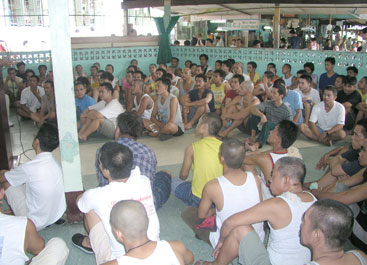
After this, the Narconon team traveled to the Quezon City jail. The jail houses four times as many prisoners as it was intended for and there is little if any help for those in the jail who are addicted. The inmates not only learned about the Narconon drug rehab program and received a drug education lecture, they also learned how to give each other the gentle physical assists that form part of the Narconon First Step program.
August was a particularly action-packed month for Narconon International President Clark Carr.
First, he traveled to Shanghai to offer a series of drug prevention and rehabilitation workshops to teachers and school administrators. This was the first time the Narconon technology had been offered to professionals in this region. After learning how to execute some of the assists used in the drug recovery programs, they asked to have more training delivered to parents, the police and other teachers in the city.
While in Shanghai, Mr. Carr also visited a large class of high school students and teachers and gave them their first Narconon drug education lecture.
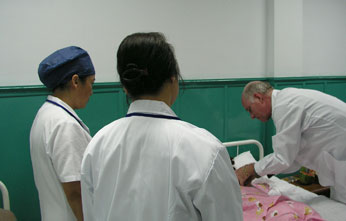
Mr. Carr also visited the Jingan District Center Hospital, which consists of six separate medical facilities in one large complex. Mr. Carr was responding to the interest of the doctors in adding a sauna to the hospital so they could run their own on Narconon New Life Detoxification, the step of the Narconon drug rehab program that flushes out old drug toxins from the body. Many recovering addicts state that this step results in greatly lowered drug cravings. Some people even say their cravings are gone. The Vice President of Hospital, Dr. Wu Xui Yong, had heard about the Narconon program success and wished to learn the details.
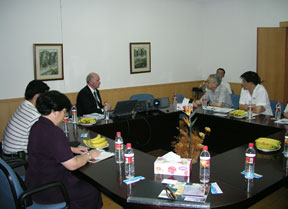
Somehow, Mr. Carr also found the time to visit a private drug rehab in the Shanghai region, the Huashi Recovery Center. In addition to enlightening the rehab officials in the Narconon drug recovery technology, Mr. Carr demonstrated one of the gentle assists used in the Narconon program to help addicts relax and be comfortable during recovery. As a result of this demonstration, of the recovering addicts in the room asked for his own assist and then some of the nurses who had been observing began giving each other assists.
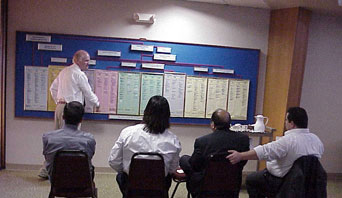
Later that month, Mr. Carr met with guests from the Jordan Department of Anti-Narcotics who came to Los Angeles to learn about Narconon. Accompanied by the Director of Programs from a non-governmental organization helping homeless children in Jordan, Colonel Tayel and his staff visited the international headquarters of Narconon and other social betterment groups who use the educational materials of L. Ron Hubbard in their projects. He also visited the Narconon rehab center in Newport Beach and the flagship center in Oklahoma, Narconon Arrowhead. Colonel Tayel’s interest was in using the Narconon drug rehab technology to help addicts in Amman, the capitol of Jordan.

And finally, in October, more international visitors arrived in Los Angeles to learn about Narconon. Twenty-one Filipino prison officials came to attend a seminar on Narconon and learn how it could be applied in a prison environment. While they were there, they also toured the rehab facility in Newport Beach. As they left for home, they requested follow-up meetings so they could continue to determine the best way to use this technology to help their inmates.
By year’s end, hundreds more people in Asia had learned how the Narconon drug rehab program and drug education curriculum could help them build stronger societies.